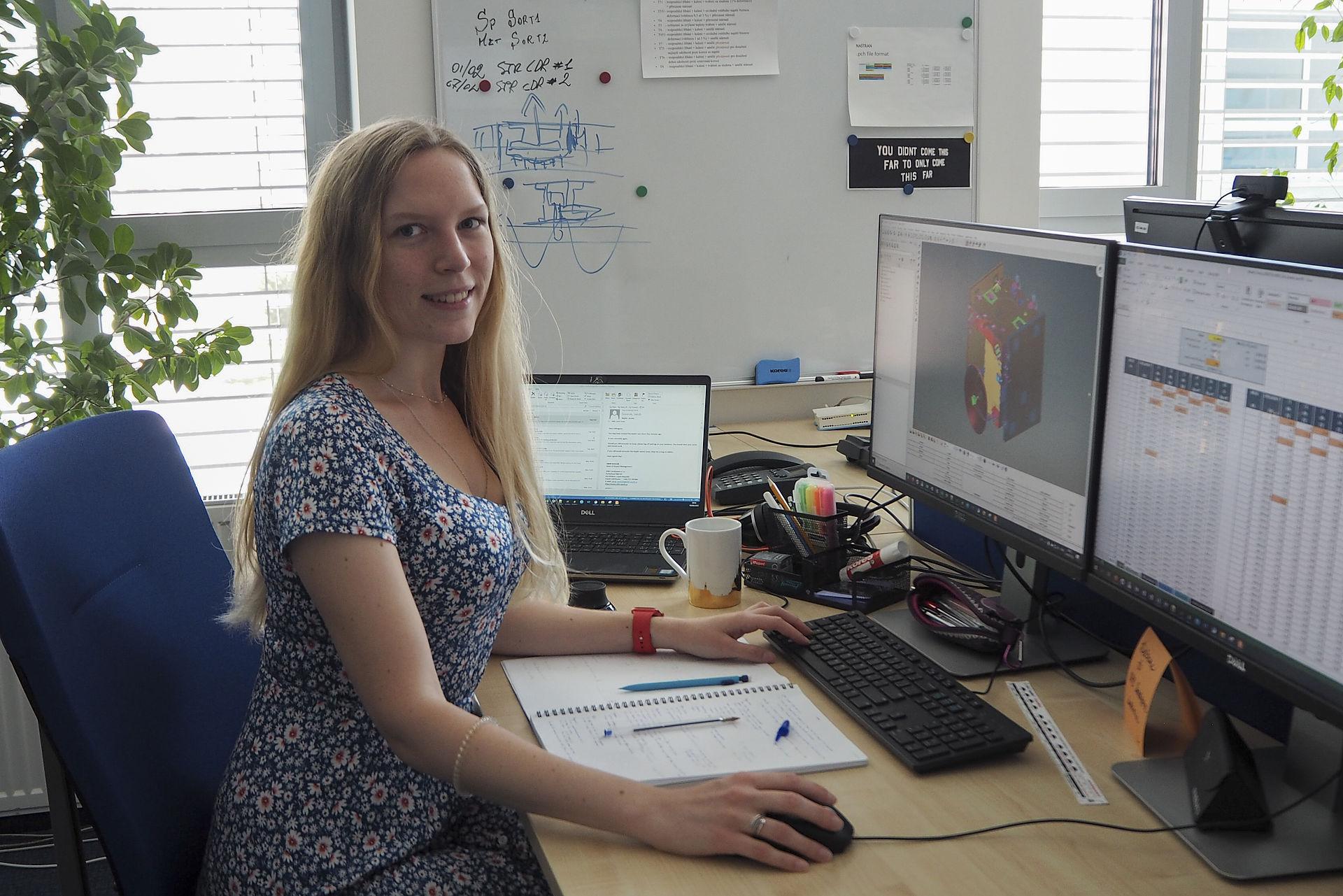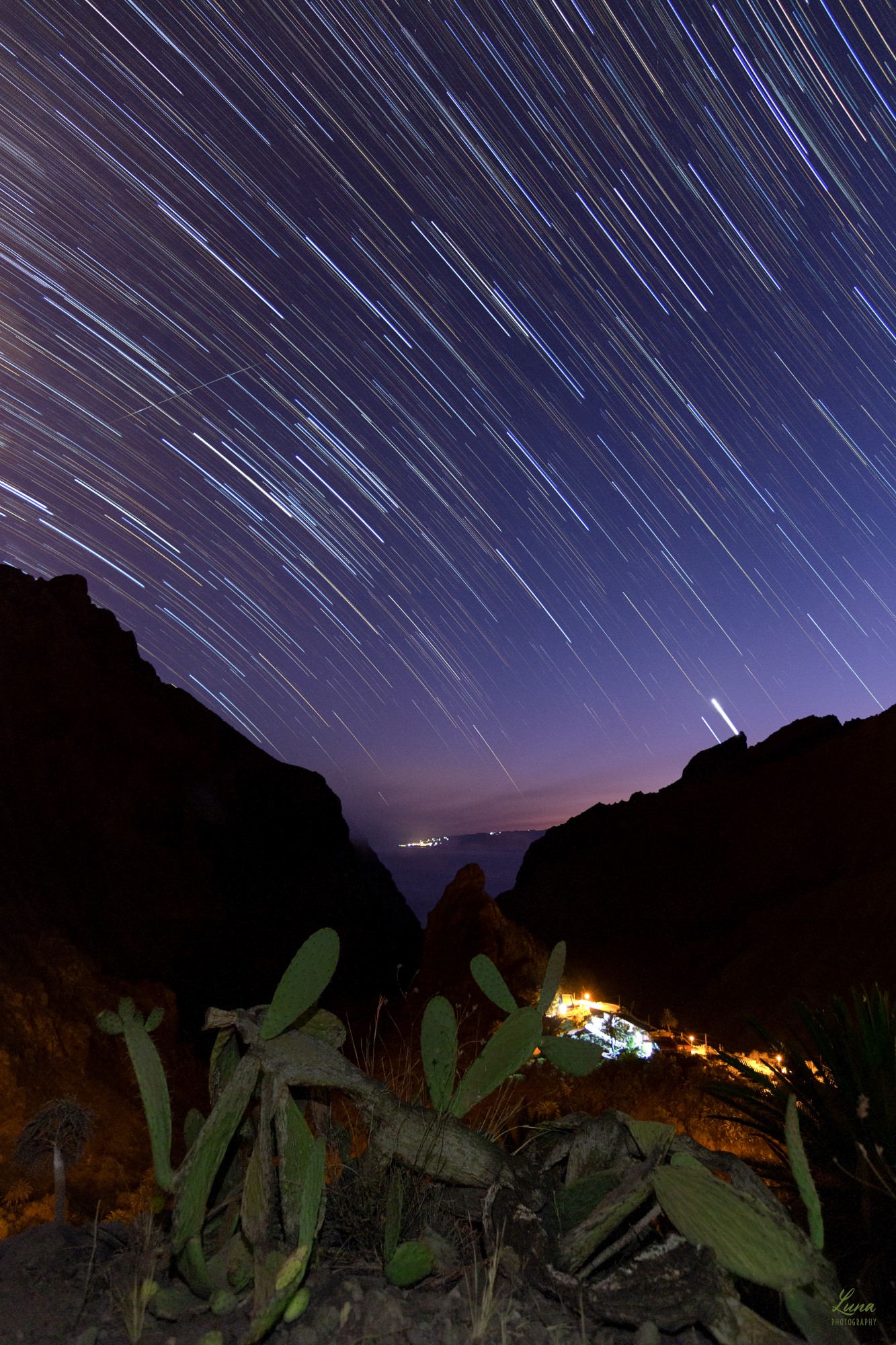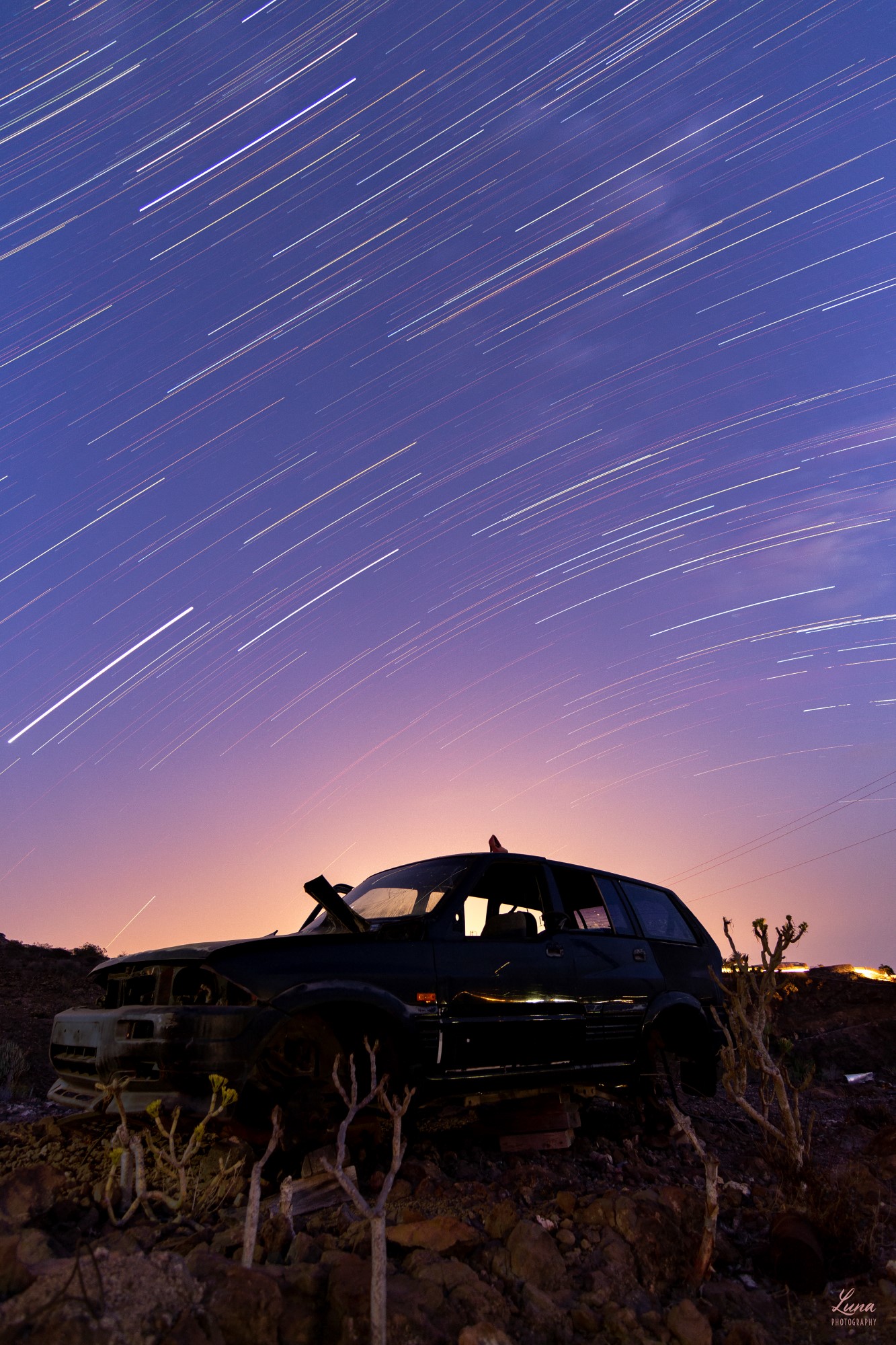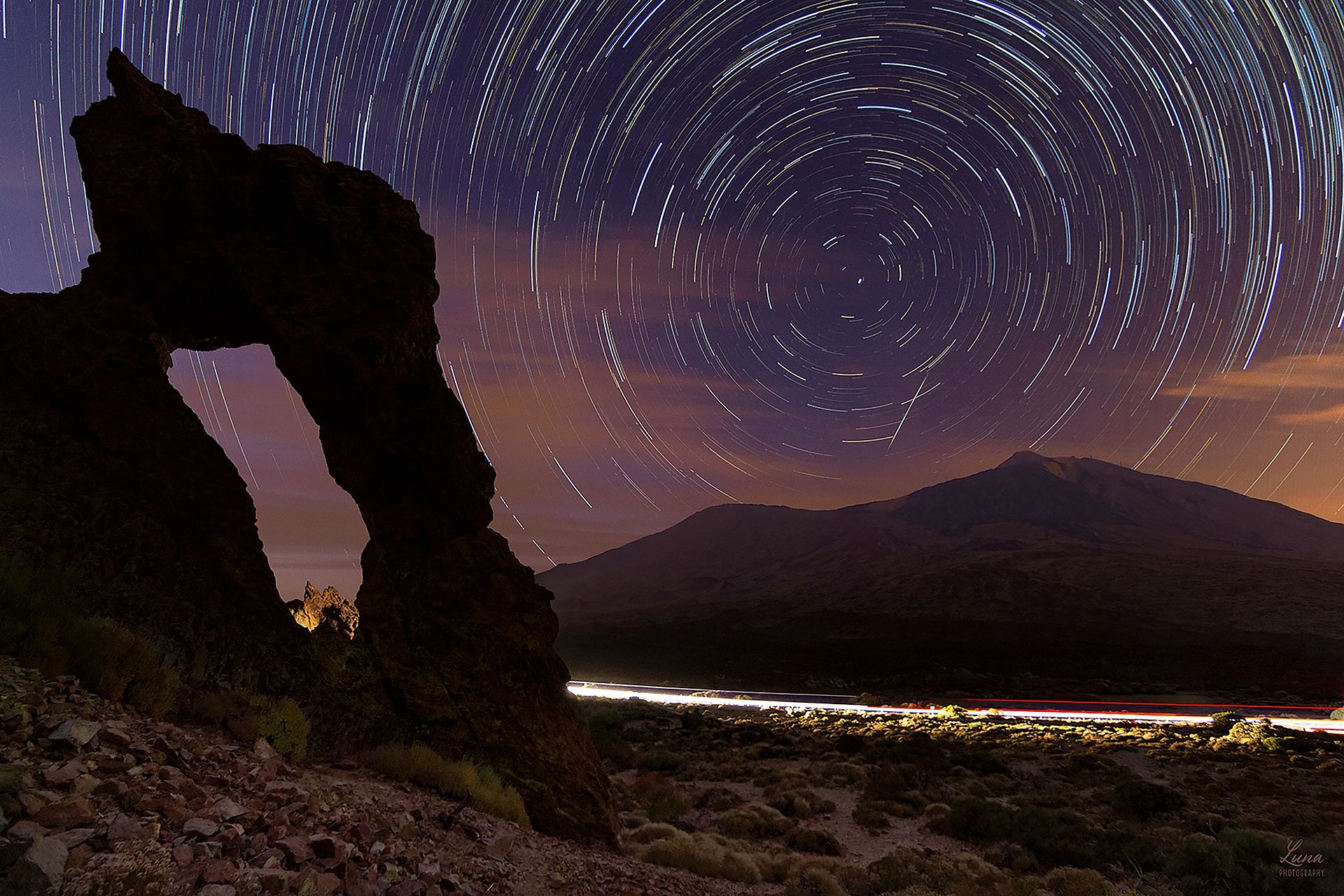On Saturday, 11 February, we celebrate International Day of Women and Girls in Science. On this occasion, we asked a few questions to our colleague Ludivine Leger, who works as a Structural Analysis Engineer in the OHB Czechspace team.
Ludivine comes from France and has a Master’s degree in mechanical engineering with a specialisation in aerospace engineering. Before starting at OHB Czechspace, she has worked on projects of spatial and terrestrial telescopes, and as a Calculation Engineer on parts of Ariane 6 launcher. She has been fascinated by space since childhood. That’s why one of her great hobbies is astrophotography.
I have always been fascinated by space, whether it be from the perspective of astrophysics, or from the perspective of space technologies such as satellites.
What do you like about astrophotography?
An aspect I value about astrophotography is that it allows us to see the sky differently than with our own eyes. I especially enjoy to create star trails, which are a representation of the trajectory of the stars over time, for they show us a vision that we cannot perceive. I also enjoy shooting the Milky Way, for these shots unveil the beauty of the sky. Finally, I am delighted by the technical aspect of this hobby, from the art of taking the photo to the one of post-processing it in order to have the best results possible.
Examples of your photos can be seen in the gallery below this interview. How does such a photoshoot work?
Astrophotography is done differently depending on whether one wants to photograph the Milky Way, create a star trail or capture a deep sky object. To give you an idea of how to obtain a star trail photo, I would say that one must go through a few steps. First, it is highly advisable to go to the location early. There, one can explore the site, think about the composition and get the equipment ready. Once the setup is ready, the actual shooting can begin. It consists of taking a series of photos of 30 s exposure each during a period of time of at least half an hour (however, the longer, the better). The final step is to stack the shots in order to obtain the final photo, which can be further post-processed.
At OHB Czechspace you are part of the Structure Analysis Team. Why did you choose this field in space industry?
I have always been fascinated by space, whether it be from the perspective of astrophysics, the science seeking to understand the Universe, or from the perspective of space technologies such as satellites. Furthermore, I have always rejoiced in figuring out how things work. Thus, I am delighted to be working for OHB Czechspace as a Structural Analysis Engineer, as it combines my passion for space and my predilection for structural analysis.
Have you ever experienced any challenges about being a female engineer in space industry?
The main challenge that I have come across as a female engineer in the space industry is a certain lack of consideration from some older male engineers. However, I have noticed other time that this behaviour tends to decrease and I have not experienced such challenge with younger generations, nor at OHB Czechspace, where I have felt listened to since I arrived.
For me, some of my dream projects are the scientific missions which help us better understand the Universe, such as PLATO which aims to discover and characterise exoplanets similar to Earth.
What advice would you give to young women who are considering a career in space industry or as Structural Analysis Engineers?
I would advise younger women to believe in themselves and dare to pursue this dream. I would also advise them to pay attention to be accurate and precise in their speech and work, as this will help them gain the trust of more experienced engineers.
If you could choose to work on any space project, what would it be? Do you have some dream project?
It is hard to choose one specific space project, as several of them are enthralling, from satellites to launchers, including telescopes. Having worked on parts of Ariane 6 as a Calculation Engineer a few years ago, then on the Extremely Large Telescope as an Opto-Mechanical Engineer, and, more recently, on structures of HERA as a Structural Analysis Engineer, I think that all of these projects offer interesting and enriching tasks, as well as different challenges.
For me, some of my dream projects are the scientific missions which help us better understand the Universe, such as PLATO which aims to discover and characterise exoplanets similar to Earth, or Euclid which aims to better apprehend dark energy and dark matter by measuring the acceleration of the Universe.




